
Culture
16:28, 04-May-2019
Finding peace and well-being at the India Garden
Updated
19:54, 04-May-2019
By Wei Lynn Tang
02:43
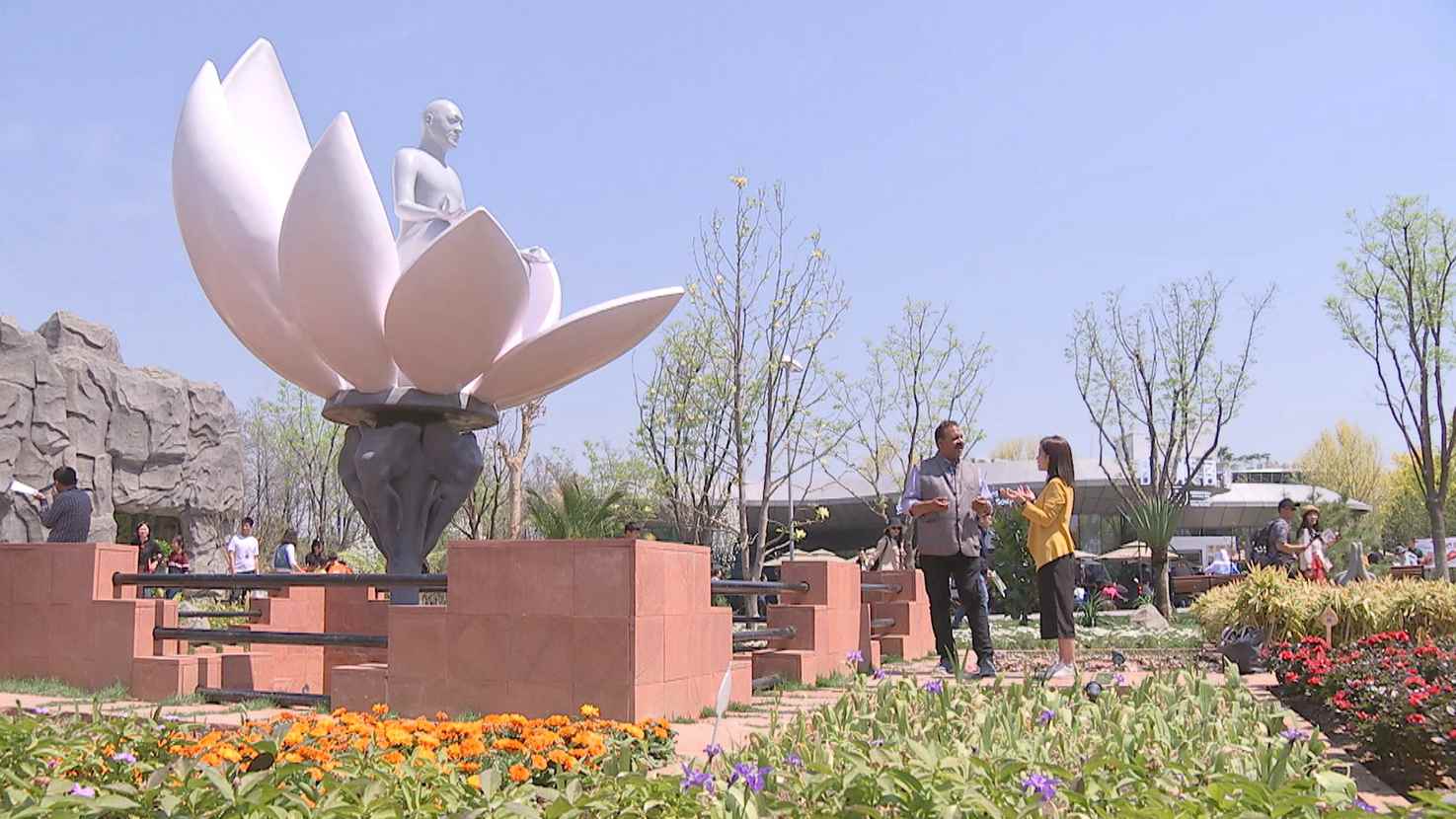
India: a land rich with history, traditions and cultural heritage. And behold, you get to have a taste of the country's diversity in all of the above and more at the Beijing International Horticultural Expo.
You'll be greeted with the symbol of a man sitting on a lotus as you step into the India Garden.
"This is called Dhyanmudra, a person meditating for enlightenment. Lotus is a sign of purity, apart from being India's national flower," Rakesh Jain, architecture director of the garden, explained.
There are 12 hand sculptures surrounding the just over-1,000-square-meter garden. Each represents a philosophy and each has a meaning behind it.
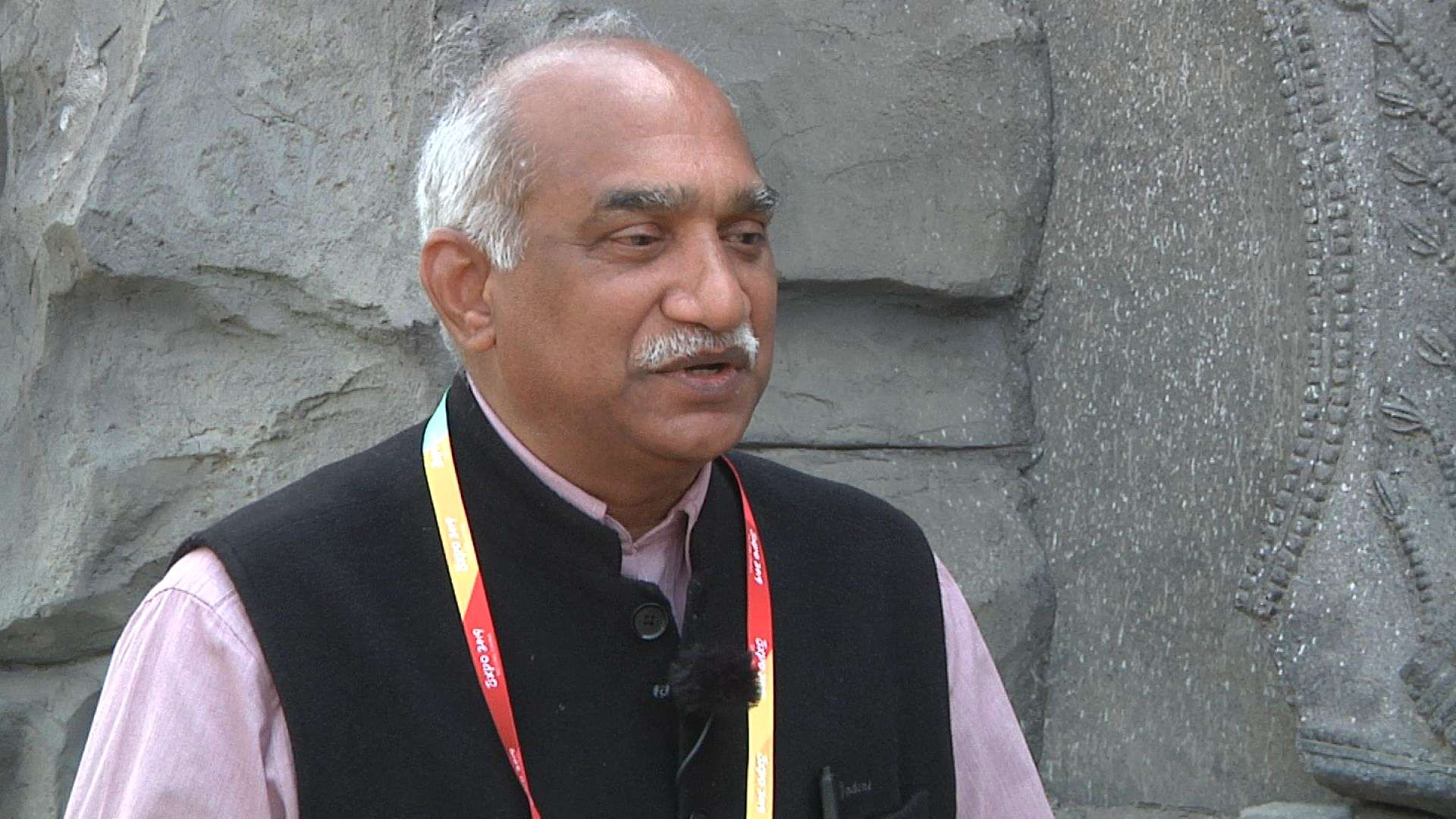
Narender Nath, CEO of the India Garden Pavilion of the Beijing International Horticultural Expo, said the garden showcases how man lives in harmony with nature. /CGTN Photo
Narender Nath, CEO of the India Garden Pavilion of the Beijing International Horticultural Expo, said the garden showcases how man lives in harmony with nature. /CGTN Photo
Narender Nath, CEO of the India Garden Pavilion, said the garden seeks to showcase yoga – via these sculptures – which is universal.
"Buddhism and Hinduism is represented but if you forget religion for a moment all these mudras also have very special benefits in the body. If you do them for certain time, they can produce certain energies in the body which can remove different types of illnesses," Nath told CGTN.
"So it's not really just a question of religion, it is also the question of finding peace and well-being within the body and the mind."
Nath added that the garden hopes to promote friendship and well-being all around the world.
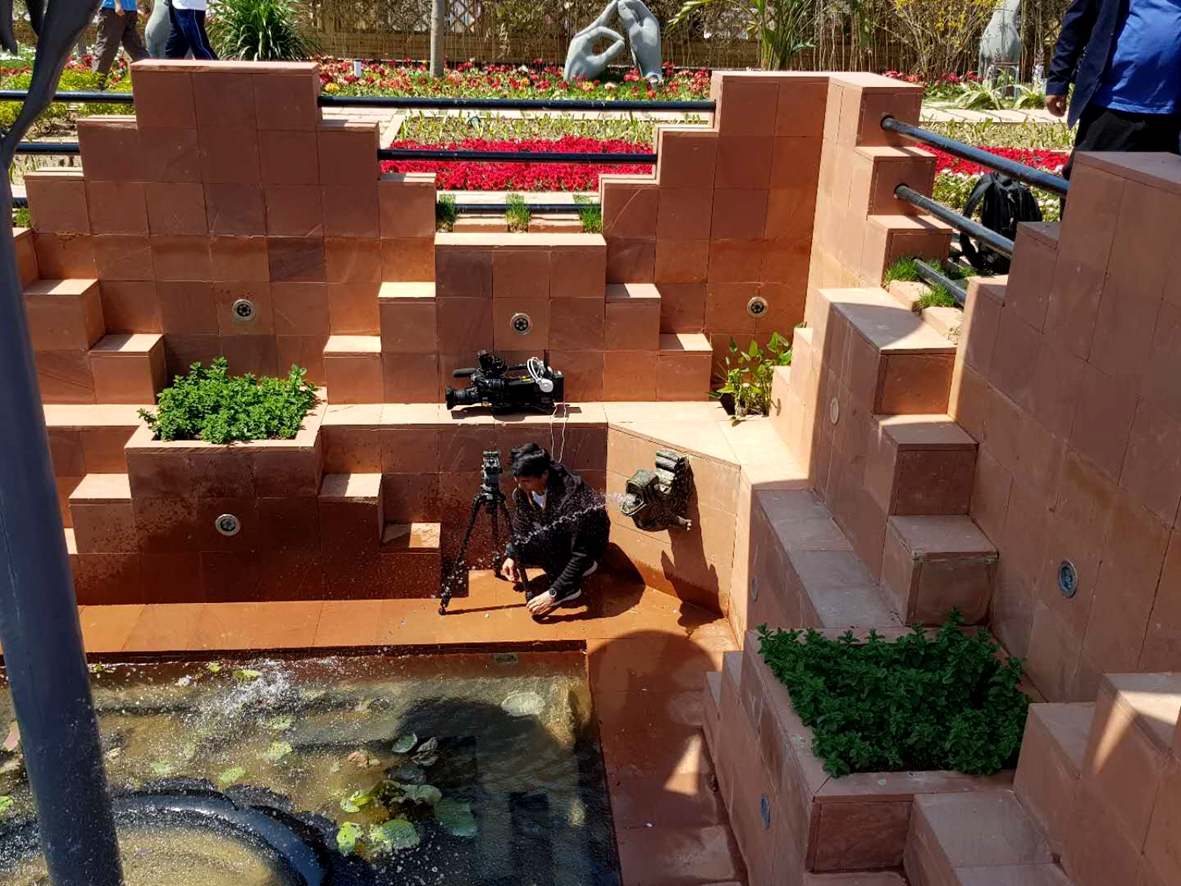
A replica of a stepwell is the focal point of the India Garden Pavilion at the Beijing International Horticultural Expo. /CGTN Photo
A replica of a stepwell is the focal point of the India Garden Pavilion at the Beijing International Horticultural Expo. /CGTN Photo
"We want to interact with the Chinese people at the most ground level and to be able to welcome them to the Indian culture and way of life. And what common things which we have achieved together as neighbors which are common in India and in China," he said.
Another highlight of the garden – a glimpse into a traditional Indian method to conserve water that has been around for the past 2,000 years.
Called a stepwell, Jain said people used to store rainwater in such a structure and it's used throughout the year.
"The steps are to ensure that people can still have access to the water stored deep down the stepwell. A reminder that people used to value water so much that they would conserve it this way."
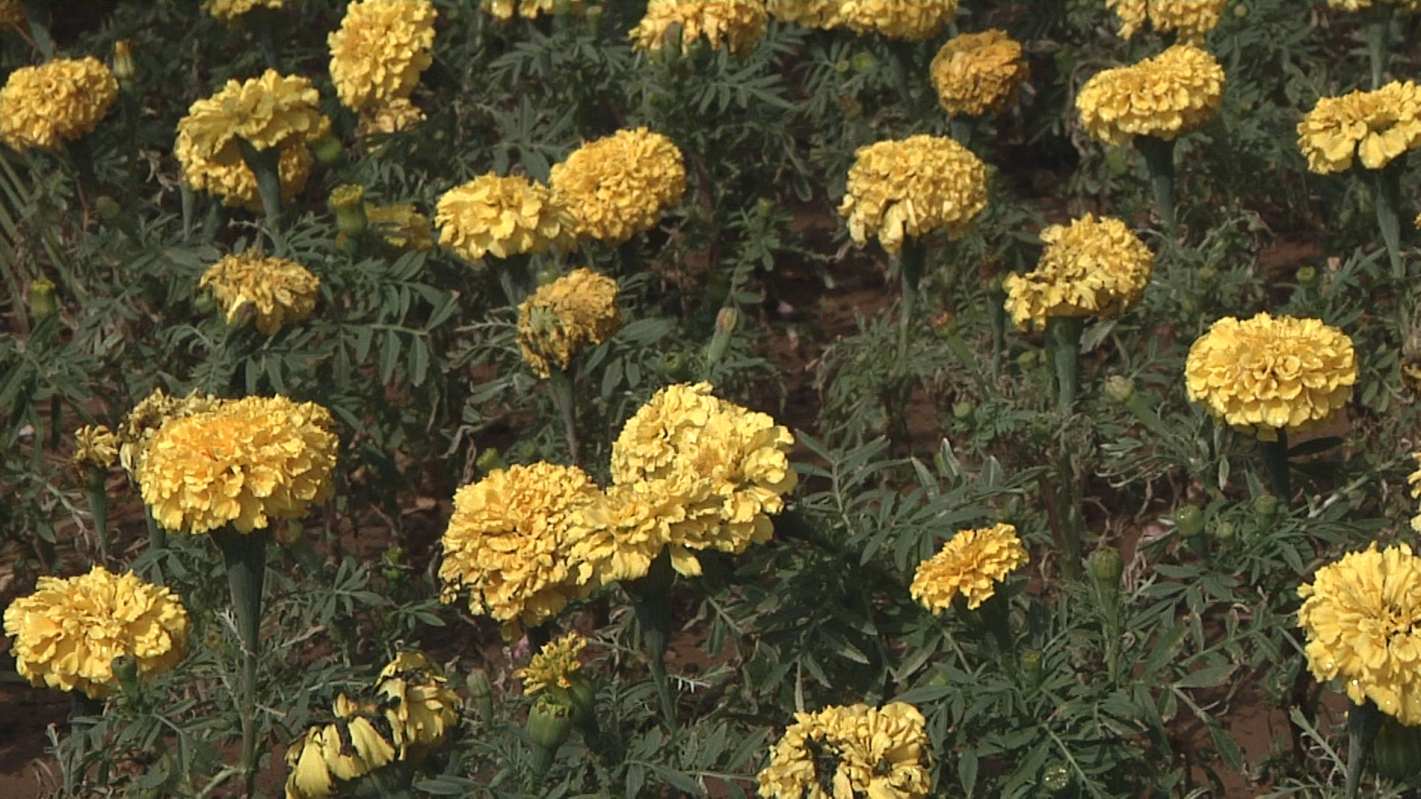
India's marigold plant is able to quickly treat injuries. /CGTN Photo
India's marigold plant is able to quickly treat injuries. /CGTN Photo
India is also known for its medicinal plants.
"The Indian marigold is used in traditional ayurvedic medicine. People crush the leaves and put it under their feet if they have an injury and it cures overnight," Jain explained.
Meanwhile, the Indian mint is able to treat stomach and digestion-related problems.
And if you wanna take home a temporary taste of India, you can try Henna. Also known as Mehndi, it's a form of Indian body art using dye prepared from a plant.
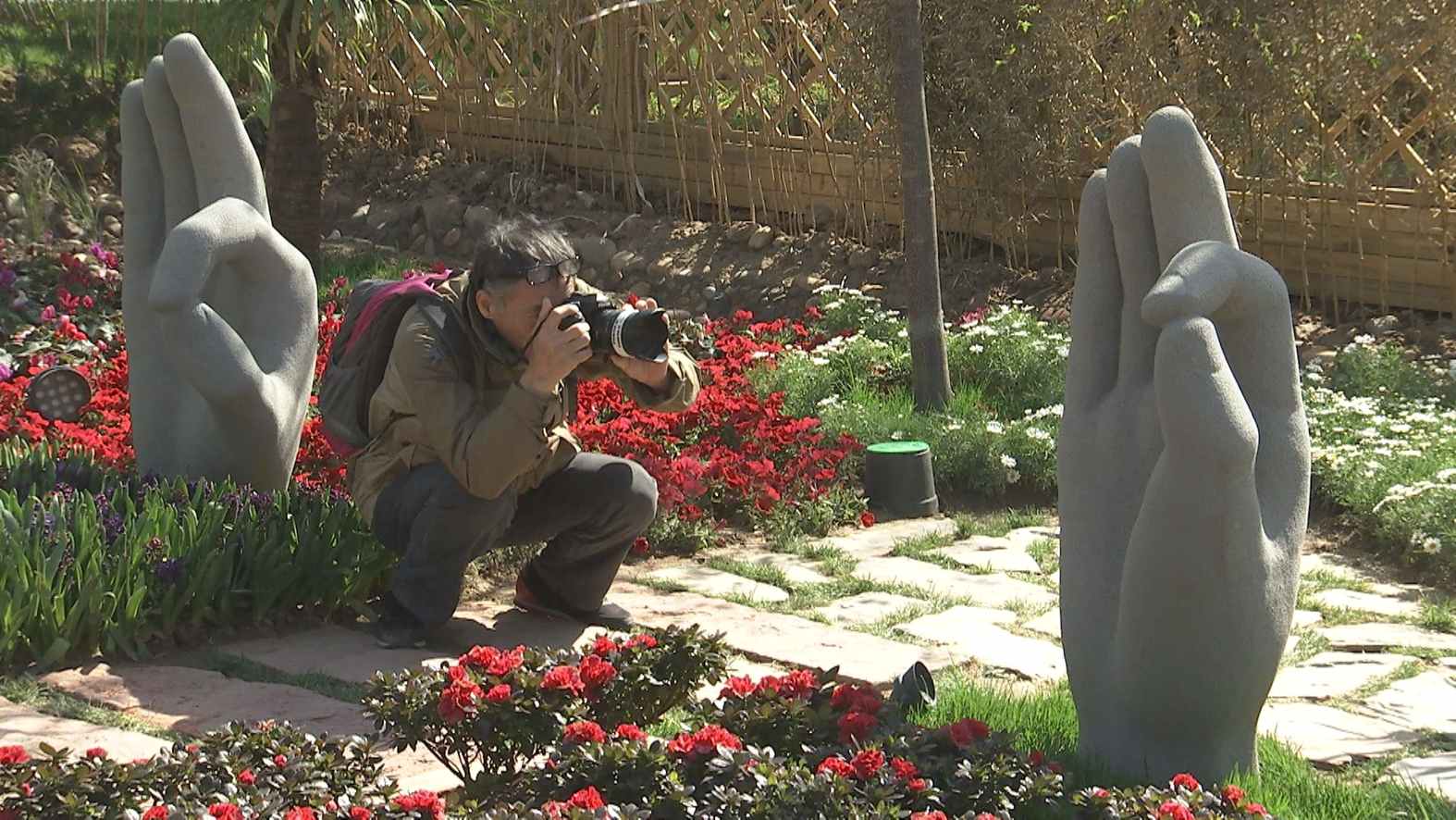
The India Garden at the Beijing International Horticultural Expo attracts Chinese tourists with its varying hand sculptures. /CGTN Photo
The India Garden at the Beijing International Horticultural Expo attracts Chinese tourists with its varying hand sculptures. /CGTN Photo
I know many ladies from around the world who have applied Henna just before their weddings!
Whether it's the flowers, the architecture or the food, your five senses are sure to be aroused here.
Namaste, as how they greet people in India in the Sanskrit language.
(Cover: The man meditating on the lotus flower shows one of the 12 hand gestures represented in the India Garden at the Beijing International Horticultural Expo. /CGTN Photo)

SITEMAP
Copyright © 2018 CGTN. Beijing ICP prepared NO.16065310-3
Copyright © 2018 CGTN. Beijing ICP prepared NO.16065310-3